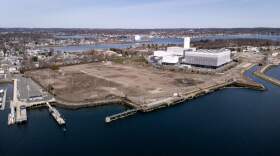President Joe Biden’s goal is to bring 30 gigawatts of offshore wind power online by the end of the decade. That aligns with the regional power grid’s plans to connect more clean energy to New England.
Large-scale clean energy goals can be achieved through competitive pricing and states shifting to renewable energy, according to ISO New England’s 2021 outlook report released this week.
A state-by-state overview:
- Connecticut wants to achieve a zero-carbon electricity goal by 2040.
- Maine wants to become carbon neutral by 2045.
- Vermont plans to shift to 90% renewable energy by 2050.
- Massachusetts has the goal of 80% renewable energy by 2050.
- Rhode Island wants to achieve its zero-carbon electricity goal by 2030.
ISO New England, operator of the region’s bulk power system and wholesale electricity market, distributes power to utility companies — with the hopes that power would be retailed at lower prices for consumers, but that's left up to the utilities.
That was the theory when it was created in the late 1990s to establish competitive pricing for power.
“Early on when the markets first started, we saw more resources were located in northern New England and so there was a pricing advantage,” said Anne George, a spokesperson for ISO.
She said competitive pricing and a regional grid operator has opened the door to more power resources spread throughout New England.
“We've seen the pricing differences between the New England states really go away on the wholesale market,” she said.
That’s important as the Biden administration green-lights more offshore wind in the Northeast. Five new areas off the coast between New Jersey and Long Island were designated for wind energy. The next step is for the federal government to lease the areas in late 2021 or early 2022, according to the Biden administration.
According to the ISO outlook report, the regional grid is expected to add 3.5 gigawatts of solar power and 1.4 gigawatts of wind power by 2030. The grid operator also expects over 800 transmission projects to connect states with reliable clean energy to be completed by the end of the decade.
George said clean energy brought in off the coast through transmission cables can benefit any New England state as if it was in their backyard.
“When resources are located in your state and near load centers and you know they're helpful to the state absolutely in terms of access to that power and the reliability of that power,” she said.
George said reliance on natural gas and other fossil fuels is inevitable while more offshore wind comes online to power 10 million homes.
And during that time, offshore wind is expected to be expensive in the short-term, according to the Manhattan Institute.
Copyright 2021 WSHU






